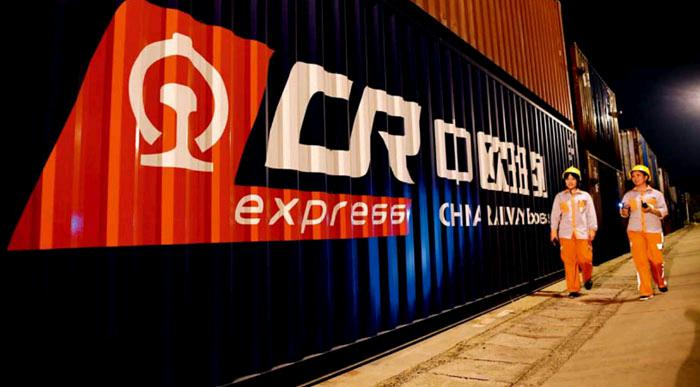China-EU Trade and Economic Cooperation:Opportunities Prevail Over Challenges
2017-04-25byYaoLing
by+Yao+Ling
The European Union (EU) has been an important trading and economic partner for China since the two established diplomatic ties in 1975. As two of the worlds major economies, China and the EU play significant roles in the multilateral trade system. In 2016, their combined shares in the global economy and trade were 37 percent and 44 percent, respectively.
Since 2015, China and the EU have accomplished three connections between their respective strategic initiatives, namely, the connection between the Belt and Road Initiative and the “Europe 2020” strategy, the connection between Chinas international production capacity cooperation plan and the Juncker Plan, and the connection between the “16+1” (China and 16 Central and Eastern European countries) cooperation mechanism and the China-EU overall cooperation.
Under the framework of those strategic connections, significant progress was made in expanding China-EU cooperation in 2016. Guided by the outcomes of the G20 Hangzhou Summit, the China-EU leaders meeting, the “16+1” cooperation mechanism, and the China-EU High-level Economic and Trade Dialogue, and taking advantage of cooperative platforms like the China-EU Economic and Trade Joint Committee and the China-Germany, China-France, and China-UK dialogues on economic cooperation, trade, and finance, China and the EU have actively promoted the connectivity of their development strategies, so as to accelerate institutional construction that facilitates each others market admissions, unleash the potential of bilateral economic and trade cooperation, and make greater breakthroughs in terms of trade and economic cooperation.
On February 22, 2017, the Trade Facilitation Agreement, the first multilateral trade protocol forged since the birth of the World Trade Organization (WTO), came into force. Both China and the EU made considerable contributions to making the agreement possible. Of course, both China and the EU face some uncertainties as the two sides try to deepen their economic and trade cooperation.
First, trade protectionism measures are springing up in developed countries, including the United States. Following an“America First” policy, the Trump administration has announced U.S. withdrawal from the Trans-Pacific Partnership (TPP), asked to renegotiate the North American Free Trade Agreement, and considered a border tax on imports. The mounting trade protectionism in the United States, as well as its shift from multilateral trade arrangements to bilateral trade protocols, has cast a shadow over the sluggish world economy.
Second, the EU faces uncertain political prospects. In early March 2017, on the eve of the 60th anniversary of the Treaty of Rome, the signing of which marked the official establishment of the European Economic Community, the European Commission released the White Paper on the Future of Europe. The White Paper sets out five scenarios, each offering a glimpse into the potential future of the EU: Carrying on current development; Nothing but the single market; Those who want more do more; Doing less more efficiently; Doing much more together. The White Paper comes at a time when the EU is facing unprecedented difficulties, especially after the Brexit referendum. At the moment, the EU stands at a crossroads, which also adds uncertainties to the outlook for China-EU trade and economic cooperation.
Third, the EUs doubts about China are increasing due to the rise of extreme nationalism and trade protectionism, as well as disturbing factors from third parties. The EU over-emphasizes“equality” and “fairness” in terms of market openness and links the solving of steel production overcapacity with fulfilling its obligation as stipulated in Article 15 of the protocol on the accession of China to the WTO. In addition, it has launched investigations into Chinas investment projects in the EU under the pretext that they violated its acquisition laws, and has demanded an exorbitant price in negotiations for a China-EU Investment Agreement with the excuse of “sustainable development” and “protecting laborersrights and interests,” creating barriers to bilateral economic and trade cooperation.
Despites those unfavorable factors, opportunities still prevail over challenges in China-EU trade and economic cooperation.
The sound political ties between China and the EU greatly bolster their bilateral economic and trade relations. Strengthening cooperation between the two sides can not only facilitate their respective development, but also accelerate the development of the worlds multilateral trade system. In 2017, win-win cooperation and shared development will remain the bedrock of China-EU economic and trade relations. It is necessary for both sides to deepen cooperation in a wide range of areas.
First, the two sides need to continue giving full play to the guiding role of high-level mutual visits and consolidate the connection between the China-proposed Belt and Road Initiative and the EUs development strategies through various bilateral mechanisms and platforms, so as to achieve progress in promoting practical cooperation as soon as possible.
Second, the two sides need to strengthen the construction of bilateral economic and trade systems, coordinate the process of negotiations on China-U.S. and China-EU investment agreements, achieve consensus on essential textual problems and key provisions of the China-EU Investment Agreement as quickly as possible, and launch joint feasibility research on a bilateral free trade area when conditions are ripe.
Third, the two sides need to properly address concerns and difficulties related to bilateral economic and trade cooperation, solve problems concerning the fulfillment of Article 15 of the protocol on the accession of China to the WTO within the framework of the WTO, and broaden consensus on handling production overcapacity through dialogue and cooperation rather than confrontation.
Fourth, the two sides need to properly implement the consensus reached at the Summit of China and Central and Eastern European (CEE) Countries, and push forward cooperation in such cooperative projects as the China-Europe Land-Sea Express Line, the Hungary-Serbia Railway, China-Europe freight trains, and Greeces Piraeus Port, thus creating good examples for ChinaEurope cooperation.
Finally, the two sides need to keep a close eye on the impacts of Brexit and the tendency towards extreme nationalism and conservatism in some EU countries, enhance academic and people-topeople exchanges, and jointly voice positive sentiments in a timely manner to create a rational, healthy environment for bilateral economic and trade cooperation.